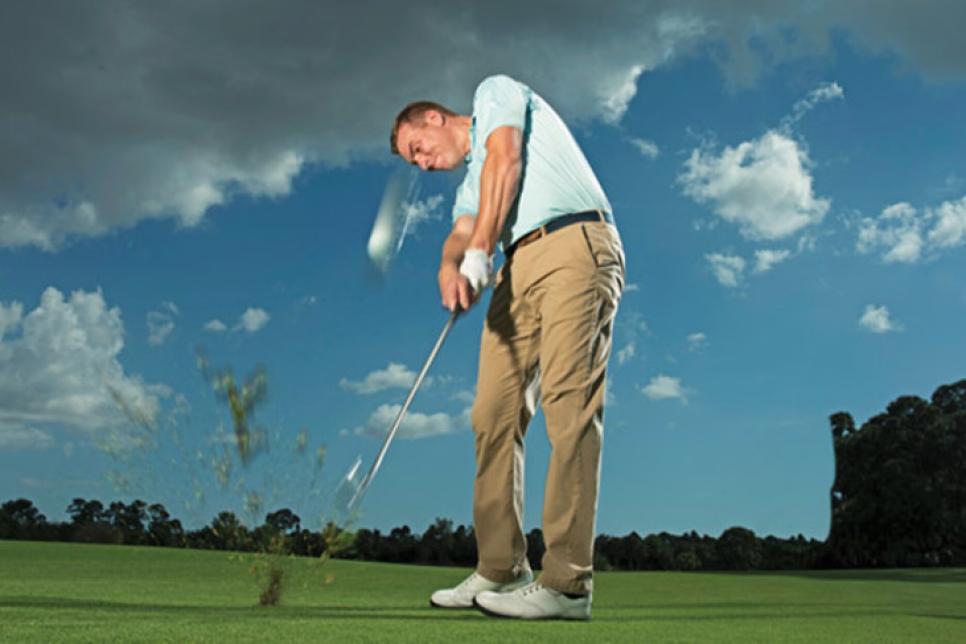The Loop
Fitness Friday: How to go down and get it

A common misconception about the way the torso moves in the golf swing is that the shoulders rotate parallel to the ground back and through. Golf instruction is often the culprit for this belief. "Back to the target; chest to the target," is a time-honored way to get amateurs to rotate their bodies instead of just swinging their arms when they try to hit the ball.
Unfortunately, without further instruction, that swing thought can promote poor body rotation. The shoulders should NOT remain parallel to the ground on either side of the swing. In the backswing, the left shoulder should dip so it's lower than the right. And the reverse happens in the downswing. If the right shoulder is not moving down toward the ball, there's a good chance you're going to thin or fat your next shot.
A poor downswing is often the result of being in a poor position at the top of the backswing. But not to be overlooked is two common faults that happen as an amateur player tries to hit the ball, says golf-and-fitness instructor Karen Palacios-Jansen. A problem known as early extension occurs when a golfer's pelvis moves toward the ball in the downswing. As this is occurring, the spine angle created at address becomes more vertical and the golfer has to do something really unorthodox in order to have a chance at hitting the ball with some effectiveness.
"My take on early extension: If your tendency is to stand up through the impact area and you hit a lot of thin shots, most likely you have tightness in all the muscles on the back side of your body—the erector spinae, gluteus maximus, hamstrings, gastrocnemius. This tightness doesn't allow you to keep the forward bend in your golf swing through impact.
"Another reason people stand up through impact is because they release the wrist hinge that had at the top of the backswing way too early in the downswing. If they maintained their spine angle after doing this, the club would crash into the ball. So they instinctually stand up to create room for clubhead to sweep the ground. These people tend to hit their tee ball better than they do their irons because the ball is on a tee and benefits from more of a sweeping motion."
Palacios-Jansen has a two-pronged attack that will help you go down after the ball and compress it. Click on the video above to see her demonstrate it.
And if you want to check out her excellent Cardiogolf program, click here.